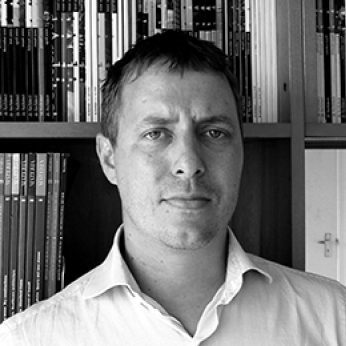WHAT WE DO
Strategy
Opportunity Framing
Functional Concept Generation
Ecosystem Mapping
Product Innovation
Building Prototype Development
Design for Manufacturing
Risk Analysis + FMEA
CAD Modelling Expertise
Complex Architecture Design
In-house 3D Printing
(FDM, SLA, PolyJet)
Spatial Computing for visionOS
WHO WE SERVE




IMPROVING GLOBAL PROJECT OUTCOMES THROUGH DESIGN
Hans and Daniel’s deep friendship stands as a testament to their joint commitment to enhancing global project outcomes through the core principles of collaboration, strategy, and innovation. Guided by their overarching mission to make the world a better place, they co-founded Red & Green & Blue Architecture Hong Kong in 2009. Here, their shared passion fuels the nurturing of compassion and the pioneering of transformative solutions capable of reshaping entire industries, leaving an indelible mark on the global stage.

Hans Tan
New Zealand Institute of Architects

Daniel Roos
Royal Institute of Dutch Architects
Ecosystem Mapping for Europe's Aging Population
As Europe’s population continues to age, understanding and addressing the unique needs of its elderly citizens becoming increasingly vital.
Ecosystem mapping, a strategic approach to charting the various components of support and care available to seniors, is a powerful tool in this endeavor. By comprehensively identifying healthcare services, social support networks, and community resources, we can better connect the dots and create a more holistic design approach to eldercare. With ecosystem mapping, we can pave the way for innovative solutions, improved policy-making, and a brighter future for Europe’s aging population, ensuring they live their golden years with dignity and comfort.
By Hans Tan
Architecture, Ecosystem Mapping
What if We Could Rebuild Rusitu Valley?
Utilizing Compressed Earth Blocks (CEBs) in Rusitu Valley’s reconstruction offers a sustainable, cost-effective, and resilient building solution. These blocks are made from locally sourced soil, reducing the environmental footprint and construction costs. CEBs also provide excellent thermal insulation, crucial for the region’s climate. Their durability ensures long-term resilience, while their availability empowers the community with skill development and local job opportunities. Incorporating CEBs into the rebuilding process aligns with RGB’s ESG principles, promotes self-sufficiency, and contributes to the overall sustainability and stability of Rusitu Valley, making it a wise choice for the reconstruction efforts.

By Daniel Roos
Architecture, Ethnographic Research
How Property Developers Are Winning with Football Data
Sabermetrics, the revolutionary approach to football analytics, shows how data-driven decisions could transform the sport. Today, a similar concept is
reshaping the construction industry – Machine Learning. By harnessing ML algorithms, developers can optimize project management, resource allocation, and cost control. Predictive analytics can foresee delays, preventing overruns. AI can suggest efficient construction methods. With the right data,
Machine Learning becomes the blueprint for efficiency in construction, saving time and money. ML is revolutionizing the way we build, making construction projects smarter, more cost-effective, and ultimately, more predictable
By Hans Tan
Property Developers, Machine Learning

The impact of Apple’s visionOS in Architecture
Mixed Reality (MR) has revolutionized design and architecture by enabling immersive visualization, real-time collaboration, and spatial analysis. It enhances client engagement through 3D design presentations, streamlines remote teamwork, aids in site analysis, training, and construction monitoring, and supports historical preservation. MR also transforms education with immersive learning experiences. This technology accelerates design, fosters innovation, and ensures client and environmental alignment. It’s an essential tool in the Apple visionOS ecosystem for creating efficient, user-centric architectural solutions.

By Daniel Roos
visionOS, Architectural Solutions
Technology Disrupting Housing
Reshaping the future of housing with innovative solutions, RGB Mars Habitation Team is giving way to cutting-edge materials such as aerogels, carbon nanotubes, advanced ceramics, self-healing materials, and shape-memory alloys that are not only more sustainable but also accelerate construction, reducing timelines and costs. Our smart materials, embedded with sensors and nanotechnology, self-monitor and adapt to environmental conditions, ensuring longevity and safety. We use building technology to pave the way for eco-friendly, resilient, and practical housing solutions making it more affordable and efficient.
By Hans Tan
Housing Design, Prototyping
The Indonesian Care Model
(Model Peduli untuk Housing)
Indonesia, a nation of vibrant culture and diverse traditions, offers a unique perspective on housing through its Care Model. This innovative approach transcends mere shelter, focusing on building resilient communities. Inspired by Indonesia’s communal spirit, the model encourages shared living spaces, fostering a sense of togetherness. Traditional “rumah adat” houses, with their eco-friendly designs, are gaining popularity as sustainable living options. Additionally, the “gotong-royong” spirit, where neighbors come together for mutual aid, strengthens social bonds and creates cohesive neighborhoods. By embracing the Indonesian Care Model, we can reimagine housing not just as brick and mortar but as a catalyst for vibrant, connected communities, offering inspiration for a more inclusive and sustainable future worldwide.
By Hans Tan
City Planning, ESG Strategy
Solidifying Insights:
The Power of Empirical Evidence
In today’s data-driven world, information is power. RGB has harnessed the art of creative data mining to uncover privileged insights that go beyond theoretical claims. Our strategies are not just guesswork, they are finely calibrated, tried, and tested over nearly two decades of experience. Our approach is grounded in statistical validity, drawing on a rich tapestry of large-sample learnings. This wealth of data, accumulated over almost 20 years, forms the backbone of our strategies. We don’t rely on a handful of anecdotal cases; instead, we leverage a robust foundation of empirical evidence to ensure that our methods deliver results you can trust. At RGB, it’s not just about claims, it’s about proven, data-backed success.
By Hans Tan
Business Strategy
Engaging Clients with the Power of Voice
Businesses today seek innovative ways to engage clients, and the power of voice is gaining momentum. Voice technology, driven by virtual assistants like Siri and Katja (RGB Assistant), offers personalized, interactive client interactions. Incorporating voice can provide real-time support, streamline customer service, and enhance user experiences, whether through voice commands, bots, or voice search optimization. Voice not only adds convenience but also fosters a deeper connection with clients, humanizing interactions. Embracing this technology is a strategic move toward client-centric engagement that can set businesses apart in the competitive landscape as the world becomes increasingly voice-centric.

By Daniel Roos
Human Factors Engineering
Efficiently Assembled Prefabricated
Buildings in the Netherlands
In the scenic town of Bloemendaal, Netherlands, RGB has harnessed Warsaw-sourced prefabricated building components, spearheading a construction revolution marked by exceptional speed and cost-efficiency. By tapping into Eastern Europe’s ability in precision engineering and cost-effective production, this venture serves as a beacon for sustainable and efficient construction practices. Beyond expediting project timelines, it pioneers future developments across Europe, exemplifying the boundless potential of cross-border collaboration in advancing architectural excellence.

By Daniel Roos
Concept Generation, Extended Reality

& is the catalyst that transforms you and me into we. Together, we can innovate, solve complex problems and create a better future
Strategic Valuation:
Measuring the Value of the Project
Valuation is the compass that guides project management and investment decisions. In the world of business, understanding the true worth of a project is paramount. It’s not just about assigning a monetary value, it’s about assessing risks, potential returns, and alignment with strategic goals. Measuring and managing project valuation involves careful analysis, factoring in variables like market trends, cost projections, and expected revenue. This process ensures informed choices, steering stakeholders away from costly missteps and towards profitable endeavors. In a dynamic and competitive landscape, effective valuation isn’t just a tool – it’s a strategic necessity. It empowers organizations to prioritize projects that maximize value, fostering long-term success and growth.
By Hans Tan
City Planning, ESG Strategy
Bar Design in Bangladesh
Designing a bar in Bangladesh is a thrilling challenge that blends innovation with cultural sensitivity. In a country where traditional and contemporary elements coexist, the bar’s design must strike a delicate balance. Incorporating sustainable features that aligns with Bangladesh’s commitment to environmental conservation. Moreover, integrating technologies for efficient inventory management and customer service enhances the bar’s operational efficiency. Cultural elements like colors, local artwork, and a warm, welcoming atmosphere resonate with Bangladeshi sensibilities. By fusing modernity with tradition and sustainability with technology, this next-generation bar system aims to redefine the nightlife experience in Bangladesh.

By Daniel Roos
Interior Design, Project Management
Four Seasons London
Integrated UX + UI Design
Mei Ume at Four Seasons London sets a benchmark in culinary excellence, but its distinction doesn’t stop at cuisine. Behind the scenes, RGB collaborated on an integrated UX (User Experience) and UI (User Interface) design process that elevates the dining experience. Starting with user research and feedback, Mei Ume crafts a seamless journey from reservation to post-dining. The UI is aesthetically pleasing and intuitive, enhancing navigation. Digital menus, payment systems, and ambiance control are all designed with user ease in mind. This fusion of UX and UI design transforms dining into a holistic experience, where technology enhances, rather than detracts from, the moment. Mei Ume embodies luxury, not only in taste but also in its user-centric approach to design.
By Hans Tan
Interior Design, Omnichannel
Geopolitical Resilience for Projects
Geopolitical resilience is a concept that architects can’t afford to ignore in our increasingly interconnected world. It refers to the ability of structures and urban environments to withstand and adapt to geopolitical challenges and disruptions. Architects play a pivotal role in designing buildings and cities that are not only structurally sound but also resilient to geopolitical shifts such as climate change, security concerns, and economic fluctuations. This involves considering factors like sustainable design, disaster preparedness, and flexible urban planning. By prioritizing geopolitical resilience in our designs, architects can contribute to the creation of safer, more adaptable, and sustainable built environments that can weather the uncertainties of our ever-changing geopolitical landscape.
By Hans Tan
Architecture, Business Resilience
Redefining Housing Project Delivery: Prioritizing Leasing Over Selling
Traditional housing project delivery often fixates on selling a product, overlooking the benefits of long-term leasing and operational efficiency. Today’s real estate landscape in China is witnessing a shift towards designing housing with leasing at its core. RGB approach crafts spaces tailored to future tenants’ needs, emphasizing flexibility, sustainability, and user experience. It’s about creating environments that attract and retain tenants, maximizing investment returns. Prioritizing leasing ensures housing remains adaptable and valuable in an ever-evolving market, benefiting both developers and tenants.
By Hans Tan
Architecture, Prototyping
Advancing Projects Through Iterative Design
Iterative design is the compass that guides successful project development. Rather than relying on a fixed plan, it’s a dynamic approach that thrives on constant refinement and feedback. The process involves creating a prototype or initial design, gathering input, making improvements, and repeating this cycle until the desired outcome is achieved. This iterative dance is particularly beneficial in the world of product development, software engineering, but we apply it in architecture and construction. It allows for flexibility, adaptability, and responsiveness to changing requirements. By embracing iteration, projects evolve organically, uncovering potential pitfalls early, reducing costs, and ensuring that the end result is not just functional but outstanding.

By Daniel Roos
Architecture, Opportunity Framing

Associating the color black solely with sophistication can unintentionally reinforce harmful stereotypes and bias

GOT A QUESTION ?
ASK KATJA
architecture@rgb.hk
This website is built as a single HTML document with
less image resolution to reduce carbon footprint.
